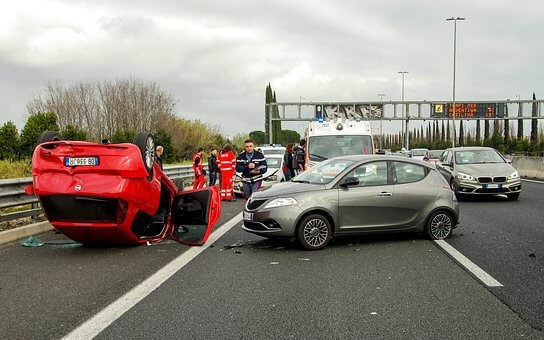
Do I Need Full Coverage on a Used Car?
Many drivers assume full coverage is only necessary for brand new vehicles. However, whether you need full coverage on a used car depends on two critical factors: how you paid for it and what it’s worth.
When Full Coverage Is Required on a Used Car
If you financed your used car through a loan, your lender becomes the lienholder. This means they own the vehicle until you pay it off completely. As the legal owner, the lender will require you to carry three types of insurance:
- Liability insurance
- Collision insurance
- Comprehensive insurance
These three coverages together are commonly referred to as “full coverage.” This requirement exists regardless of whether the car is new or used. The lender protects their asset by mandating adequate insurance coverage.
Dropping any required coverage violates your finance contract and puts your loan at risk. The lender may also add force-placed insurance to your loan, which is significantly more expensive and only protects the lender, not you.
When Full Coverage Is Optional on a Used Car
If you purchased your used car with cash, you own it outright. State law only requires minimum liability insurance, which is the most affordable option. The decision to add full coverage becomes entirely yours.
While you’re not obligated to buy collision or comprehensive coverage, this doesn’t automatically mean you should skip it. The key is evaluating whether the coverage cost justifies the protection it provides.
Understanding What Full Coverage Protects
Full coverage protects your vehicle from damage through two main components:
Comprehensive Coverage
Comprehensive coverage handles non-collision incidents, including:
- Animal-induced damage
- Falling objects
- Fire
- Theft
- Vandalism
- Weather damage
This coverage helps pay to replace or repair your vehicle when it’s stolen or damaged in ways that don’t involve colliding with another vehicle or object.
Collision Coverage
Collision coverage ensures your vehicle receives protection when it collides with another vehicle or inanimate object. This coverage applies regardless of who caused the accident.
Physical damage coverages typically pay the lesser of the actual cash value, replacement cost, or repair cost to restore the vehicle to its pre-loss condition, minus your deductible.
Should You Keep Full Coverage on Your Used Car?
Many drivers wonder if they should drop full coverage once they pay off their used vehicle. Just because you can doesn’t mean you should. The decision requires balancing risk tolerance against affordability.
Consider these questions:
Could you afford to replace your used car if you caused an accident with only liability insurance? If your car is worth $8,000 and you’re at fault in an accident, can you cover that loss out of pocket?
Is saving a few hundred dollars annually worth the financial risk if something happens to your vehicle?
Auto insurance fundamentally transfers risk from you to the insurance company. Accidents are unpredictable by nature, and anything can happen at any time.
The 10% Rule for Used Cars
Use this guideline to determine if full coverage makes financial sense for your used car:
If your annual full coverage premium exceeds 10% of the replacement value you would receive from your insurance company, consider dropping it.
Example: Your used car is worth $4,000, and you carry a $1,000 deductible. After the deductible, you would receive a maximum of $3,000 from your insurance company. If your full coverage premium exceeds $300 annually, switching to liability-only coverage may be appropriate.
This rule works particularly well for older used cars with lower values. The monthly savings can build an emergency fund for vehicle repairs or contribute toward your next car purchase.
Factors to Consider for Your Used Car
Vehicle Value: How much is your used car actually worth? If it’s worth less than $3,000-$4,000, full coverage premiums may represent a poor value proposition.
Deductible Amount: Remember that you’ll pay your deductible before receiving any insurance payout. A $1,000 deductible on a $3,000 car means you’d only receive $2,000 after a total loss.
Your Financial Cushion: Can you absorb the loss if your used car is damaged or totaled? If not, maintaining full coverage provides peace of mind.
Driving Record: A clean driving record doesn’t prevent accidents caused by other factors like weather, theft, or vandalism. Comprehensive coverage protects against these risks regardless of your driving history.
Daily Dependence: If you rely on your used car for work or essential transportation, full coverage ensures you can repair or replace it quickly after a covered incident.
Making Your Decision
To determine your coverage needs:
- Review any existing loan paperwork to confirm whether full coverage is required
- Calculate your used car’s current market value
- Compare your annual premium cost against the 10% rule
- Assess your ability to replace or repair the vehicle out of pocket
- Consider your risk tolerance and financial situation
Some drivers drop full coverage immediately after paying off their used vehicle, assuming they can handle any repairs personally. However, even experienced drivers with clean records face unpredictable risks.
Getting the Best Value
Whether you decide to maintain full coverage or switch to liability-only insurance on your used car, obtaining the best coverage at competitive rates is essential. Shopping among multiple insurance carriers often reveals significant savings opportunities while ensuring adequate protection.
The goal is securing the right insurance policy for your specific situation at the best possible price. A few minutes comparing rates could save you hundreds of dollars annually while providing the coverage level that matches your needs and budget.

